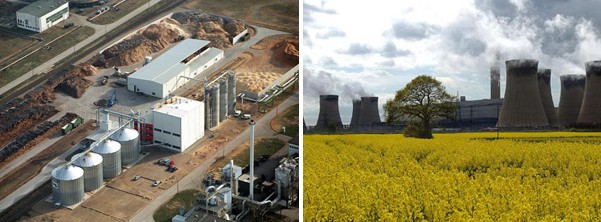How to make use of biomass waste?
How to make use of biomass waste?

So many people want to make full use of biomass waste such as wood sawdust, saw shavings, wood chips, tree branches and twigs, rice husk, wheat straw, corn cobs, grain stalks, bagasse, plam EFB, cotton stalks and other wood waste and agricultural waste. Low carbon emissions and environment protection has long become a hot issue across the whole world. How to realize sustained development and transformation of energy structure from fossil fuel-leading consumption into green energy use have also been crucial questions to be grappled with. Especially, China, one of the largest coal and fossil fuel producers and consumers cannot even cater to the demands for fuel from herself. As we can tell the cold fact exists all over the rest of the world as well. Prices of coal, petroleum and gasoline have been surging and remaining high. The contradictions between small supply and large demands are becoming harsher and yawning. As it has been predicted accordingly that the vicious cycle is spiraling continuously. So there have been many countries and governments becoming aware of the critical conditions and practically carrying out and implementing stringent mandate and regulations to boost the progress in low carbon industry. In China, the central government took many cities and regions as pilot project targets to get the renewable energy sector to mushroom with abundant subsidies and support of policies.
During the processing and transport of biomass we may encounter some technical and economic problems, which are mainly related to the large volume of biomass, causing high transport costs and increased requirements for storage space. Also, high water content causes biological degradation as well as the freezing of fuel, which brings some obstacles in the transport system. In addition, differences in water content cause problems in finding the optimal operation and management of energy facilities. All these problems can be partially minimized by the densification of the material, which provides more uniform fuel properties.
The main advantages of fuel densification compared with not densified fuels are as follows:
Increased bulk density after the densification, this reduces transport costs, reuduces the need for very large storages spaces, and simplified the handling of the fuel.
Increased energy density and more homogeneous composition provide better options for burning, and therefore a more efficiency combustion process.
The main disadvantage of densification is the relatively high cost of input energy, which is needed for the production of pellets and briquettes. This will also increase the price of the output product. The output product is in the form of briquettes or pellets. Calorific value, water content and chemical composition are approximately same for both, but the density and strength is usually higher for pellets. The main difference is in size. Pellets are 4-5times longer than their diameter, while briquettes have a diameter of 80-90mm. briquettes and pellets provide a simple use in the fully automatic operation from home use to large scale applications.
Briquettes are primarily used instead of firewood for manually charged domestic stoves. Pellets can be used in automatically charged stoves and boilers due to their good flowability, uniform water content, grain size and chemical composition. Consequently, pellet stoves and boilers for domestic applications offer a comfortable operation similar to oil fired systems.

Kingman responded to the call according to the increasing demands for green fuel around the world to develop the new-generation
briquetting presses which are capable of handling varied biomass materials such as residue and offcut from forest and agriculture. Straw and sawdust after the process of briquetting will be converted into green and environment-friendly energy replacement for fossil fuel. Besides, biomass waste can be collected easily and the centralized handling of the material will possess high efficiency and we can give a full play to its thermal value.
Since the comprehensive utilization of renewable and sustained resource is heading to industrialization and standardization worldwide. We will brace for a historic revolution occurring to energy structure transformation and upgrading. And you will garner more profits from the related industries.

